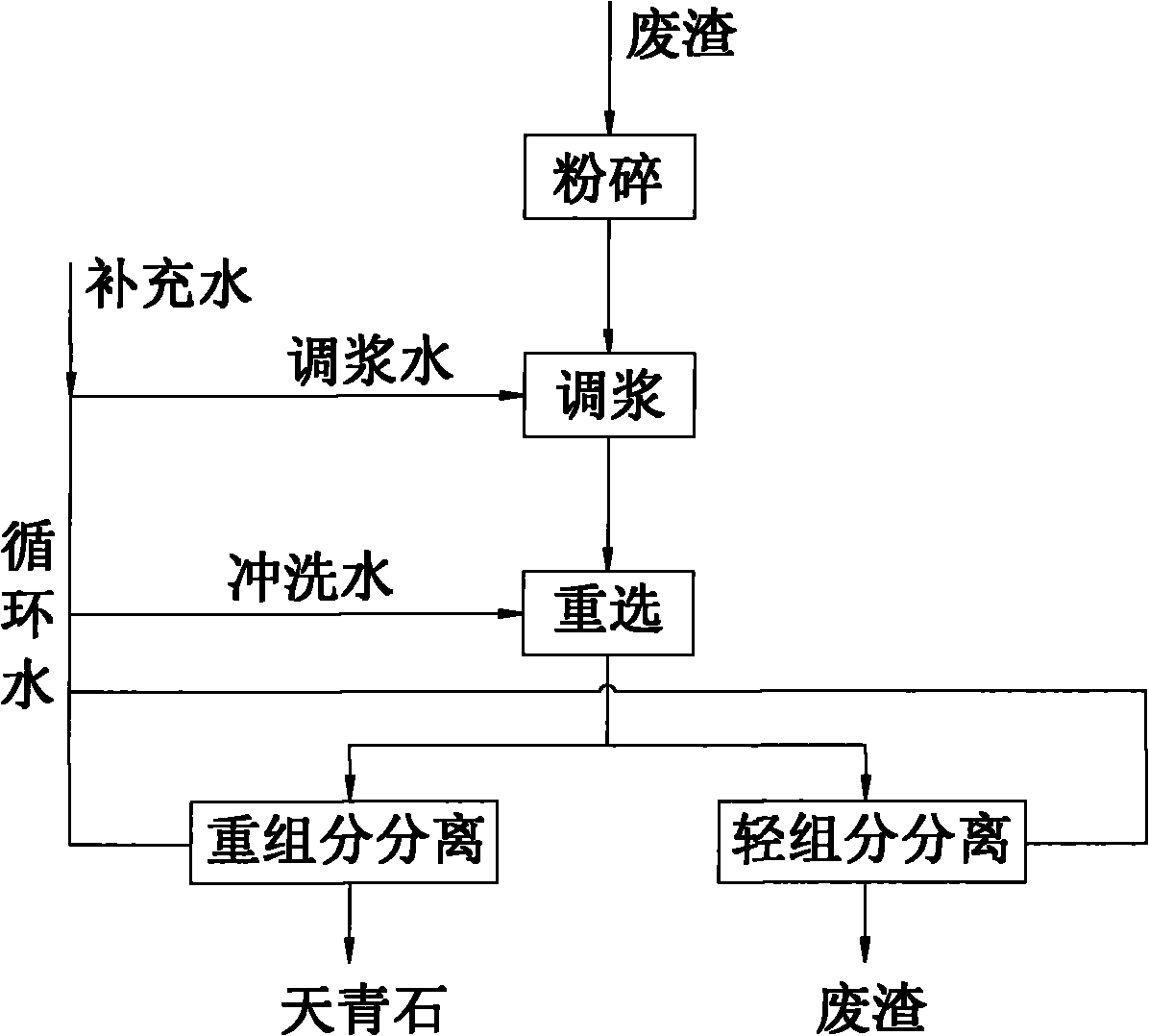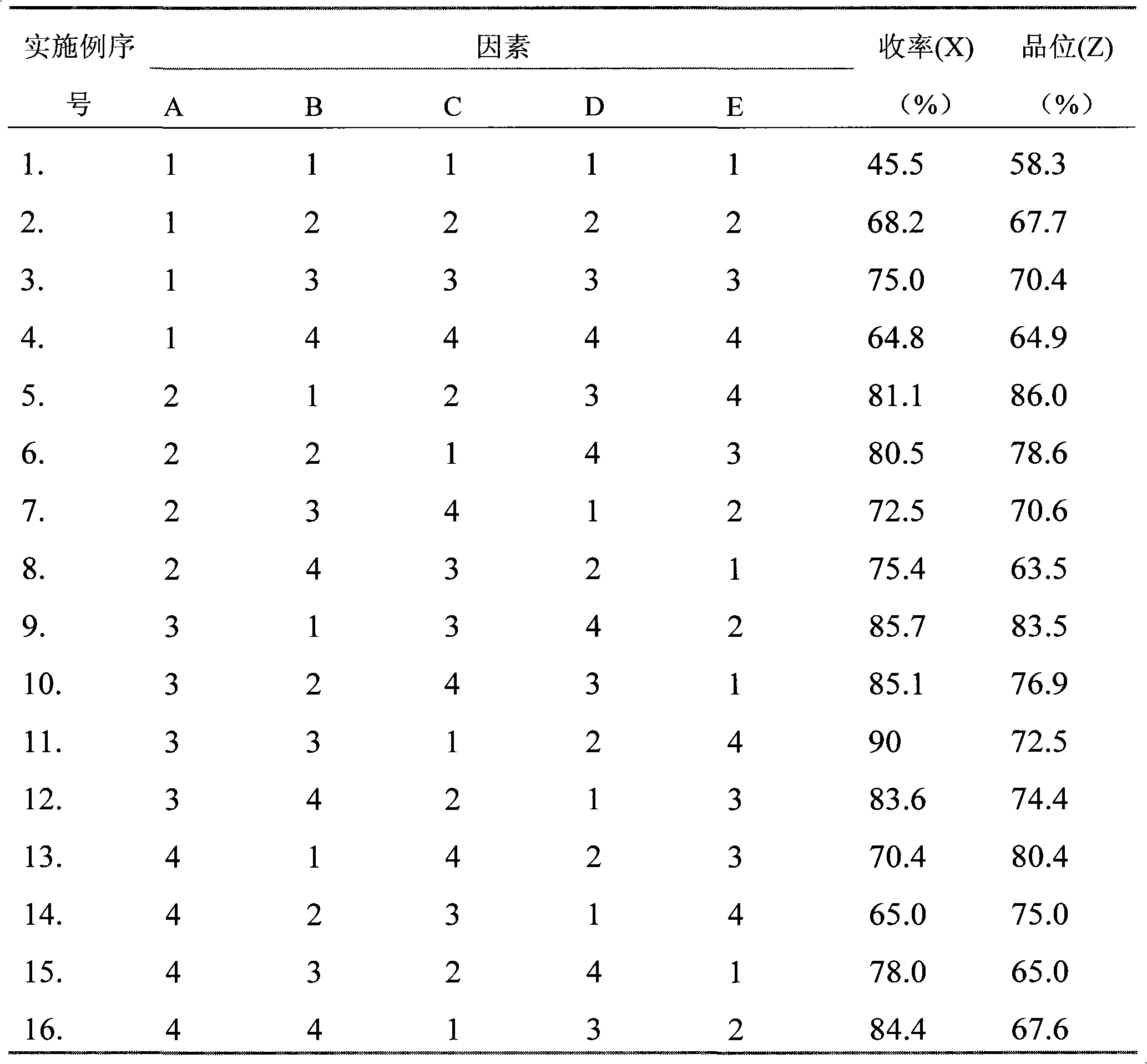Method for recovering celestite from waste residue in strontium carbonate production by celestite back salt method
A technology of lapis lazuli and strontium carbonate, which is applied in the removal of solid waste, calcium/strontium/barium sulfate, etc., can solve the problems of waste of resources, low utilization rate of lapis lazuli resources, environmental pollution, etc. Low cost and the effect of eliminating environmental pollution
- Summary
- Abstract
- Description
- Claims
- Application Information
AI Technical Summary
Problems solved by technology
Method used
Image
Examples
Embodiment 1
[0029] Example 1. refer to figure 1 , the method of recovering celestite from the waste slag of strontium carbonate produced by celestite black ash method, the waste slag containing 25% strontium sulfate is crushed to obtain waste slag powder; the particle size of waste slag crushing is required to be 120 mesh; 35% slurry; using a shaking table at a stroke rate of 300 times / min and a stroke of 13mm; when the flushing volume is 5 times the amount of slurry; select light components and heavy components in the slurry; dehydrate the heavy components , and dried to obtain lapis lazuli powder, the experimental results showed that the yield was 89.8%, and the grade was 85.0%.
Embodiment 2
[0030] Example 2. refer to figure 1 , the method of recovering celestite from the waste slag of strontium carbonate produced by celestite black ash method, the waste slag containing 25% strontium sulfate is crushed to obtain waste slag powder; the particle size of waste slag crushing is required to be 120 mesh; 40% slurry; use a shaker at 300 strokes per minute, stroke 13mm; when the amount of flushing water is 5 times the amount of slurry; select light components and heavy components in the slurry; dehydrate the heavy components , and dried to obtain lapis lazuli powder, the experimental results showed that the yield was 90.8%, and the grade was 84.6.0%.
Embodiment 3
[0031] Example 3. refer to figure 1 , the method of recovering celestite from the waste slag of strontium carbonate produced by celestite black ash method, the waste slag containing 25% strontium sulfate is crushed to obtain waste slag powder; the particle size of waste slag crushing is required to be 120 mesh; 38% slurry; using a shaker at a stroke rate of 300 times per minute and a stroke of 13 mm; when the flushing volume is 5 times the amount of slurry; select light components and heavy components in the slurry; dehydrate the heavy components , and dried to obtain lapis lazuli powder, the experimental results showed that the yield was 90.4%, and the grade was 84.4.0%.
PUM
| Property | Measurement | Unit |
|---|---|---|
| particle size | aaaaa | aaaaa |
| particle size | aaaaa | aaaaa |
| density | aaaaa | aaaaa |
Abstract
Description
Claims
Application Information
 Login to View More
Login to View More - R&D Engineer
- R&D Manager
- IP Professional
- Industry Leading Data Capabilities
- Powerful AI technology
- Patent DNA Extraction
Browse by: Latest US Patents, China's latest patents, Technical Efficacy Thesaurus, Application Domain, Technology Topic, Popular Technical Reports.
© 2024 PatSnap. All rights reserved.Legal|Privacy policy|Modern Slavery Act Transparency Statement|Sitemap|About US| Contact US: help@patsnap.com










